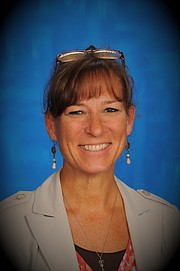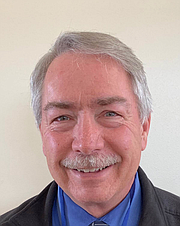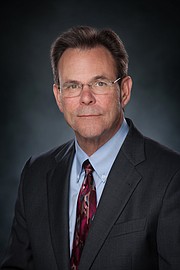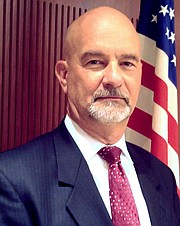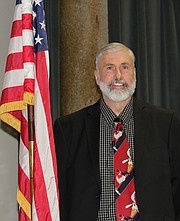Local leaders have eye on big issues in 2020
The year ahead promises to be anything but boring, internationally, nationally and locally.
The Press reached out to several community leaders and asked them to identify one important issue they expect to deal with in the coming year. Here are some of the responses.
- • •
RICK MacLENNAN
NIC President
For North Idaho College President Rick MacLennan, the college must continue to strengthen the connection to provide opportunity to the people who would benefit greatly from NIC’s educational offerings and regional employers seeking qualified workers.
This year, NIC’s foundation exceeded its goal of awarding more than $1 million in scholarships. Both the support and opportunity are there. Unfortunately, there are many in our community who still cannot see education beyond high school as a personal reality. MacLennan said that’s the challenge for NIC, to not only get local high school graduates into programs that can provide good-paying jobs and pathways to careers, but to improve entire families’ futures by closing the skills gap so that trained and educated Idahoans can succeed in the region’s current and future economies.
MacLennan said that NIC is an agile economic lever to be pulled. “With our increasing population, aging workforce, and widening labor gap, we can’t afford to leave anybody on the bench. We need everyone in the game to create a thriving workforce,” MacLennan said.
- • •
STEVE COOK
CDA School Superintendent
"Meeting the challenges of community growth. We are preparing to open a new elementary school in September, make important safety improvements in other schools and adjust our attendance zones. At the same time, we need to lay the groundwork for the next capital projects that will alleviate crowded schools and classrooms, reduce our reliance on portable classrooms, and address a backlog of repairs and maintenance."
- • •
JERRY KEANE
Post Falls School Superintendent
"(A) major project on the horizon is the opening of our new elementary school in the fall. This K-5 elementary school will be the first school in Post Falls School District built east of Highway 41. In conjunction with the opening of this new school, the Frederick Post Kindergarten Center will be closing, and we will return the kindergarten students to their home elementary schools where they can enjoy a K-5 educational experience. Opening the new school and returning the kindergartners to their home schools will require a rezoning of all elementary schools this winter/spring. The school district will be sharing more information and soliciting input as we move through the rezoning process."
- • •
BECKY MEYER
Lakeland School Superintendent
"Figuring out our facilities. Our bond didn't pass so we still have some pressing facility issues, so our top issue — with community and parent input — is focusing on how to address our facility issues."
- • •
DENNIS KACHELMIER
Kootenai School Superintendent
"My biggest concern is the proposed funding formula change. Through the various models that have surfaced, there appears to be significant adverse effect on smaller, rural schools and alternative schools. The formulas that I have seen, to date, fail to adequately recognize the economy of scale enjoyed by larger schools. Small schools, and alternative schools alike still need a teacher whether their class size is eight or 18. A larger school may fill a classroom with 25 to 30 students per teacher, simply because they have the numbers. An alternative school serving some of the most at-risk students in the state would be decimated by the formulas being discussed."
- • •
RON JACOBSON
Post Falls Mayor
“I believe growth will continue to be the biggest issue facing the City of Post Falls in 2020. Growth impacts the City’s infrastructure and we will need to stay in front of it. Traffic concerns will continue to be an issue and the Highway 41 improvement is a big part of the traffic congestion and frustration. I had hoped that we would see significant progress on this project in 2020, but there have been challenges the state has been dealing with which has delayed the start of construction. Our hope now is that contracts will be awarded for relocation of the utilities along the highway and that we will see this completed in 2020. This is a major project and we can expect traffic to be negatively affected during construction. While traffic will be worse during construction, it is hoped that the end result will be a significant improvement over the current situation.”
- • •
VIC HOLMES
Rathdrum Mayor
“The real concern in Rathdrum is traffic. We are a city separated by two state highways that are under redesign. The projects are under budgeted. We have already received a 2 million dollar bill for Highway 41 from the state. The state decided not to raise the fuel tax, but instead transferred the cost of the highways to the cities. Fortunately we had money set aside or we would have had to tax our citizens. The 2 million dollar bill will pretty much deplete our highway funds. The simple fact that there aren’t enough jobs in the northern part of the county means everyone travels on the highways to go to work. We’re working on industry in town-We just passed our first urban renewal district. We’re looking for clean energy, clean industrial jobs. But people need to travel. It’s a complex thing: where the money comes from, where the roads go. It’s not something the city can solve. It’s simply not just Rathdrum that is growing, it’s the entire county that’s growing. Every day and every night, in a long line of cars, people are going home through Rathdrum. Suddenly we have a rush hour.”
- • •
STEVE WIDMYER
Coeur d’Alene Mayor
“We will be working on a new comp plan in 2020 and that will be a critical part of addressing the growth and affordable housing issues. We need to decide on density, traffic flows and all of the other issues that are affected by a growing population. We also need to work closely with our job creators and work force education partners to help create better-paying job opportunities for our citizens. This will help ease the burden of housing for many.”









